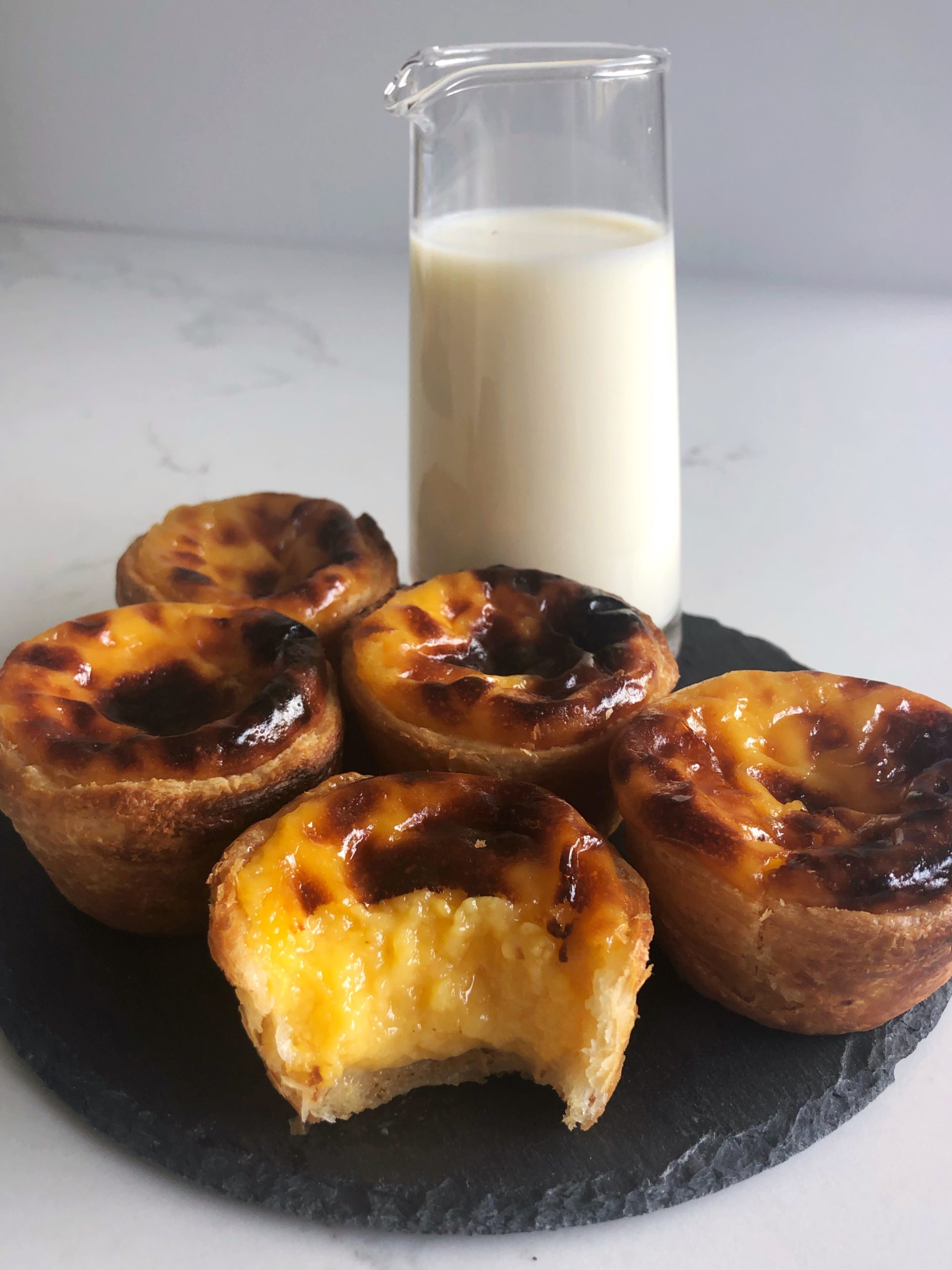Still hungry?
Explore more recipes.
Mix the flour, salt and water in a stand mixer fitted with a dough hook over medium low speed for about 1 minute until the mixture comes together and pulls away from the side of the bowl. If no mixer is available, use a wooden spoon to stir together until it comes together in a soft, pliable dough.
Flour your work surface and pat down the dough into a 6” square with your hands and a pastry scraper. Flour the dough and cover with a bowl or plastic wrap and allow the dough to rest for 20 minutes.
Roll the dough with a rolling pin into an 18 inch square. Ensure the work surface is generously floured to make sure the sticky dough does not stick to the surface. Brush excess flour on the dough with a pastry brush gently.
Divide the soft spreadable butter into 3 portions. Spread the first portion on the 2/3 of the left part of the dough leaving a one inch border around the edge of the dough.
Using a pastry scraper to assist, lift the dough on the right and fold the 1/3 unbuttered dough over the dough. Then lift the left side of the buttered dough to cover the right. Seal and pinch edges of the dough to seal and release any air bubbles by piercing gently wiith a bamboo skewer or sharp point of a knife.
Brush off excess flour and turn the dough 90 degrees to the left so the fold is facing you. Roll out the dough to 18 inch square again and repeat the butter of the second portion. Fold the dough as in step 5.
For the final rolling, turn the dough 90 degrees to the left and roll the dough to a rectangle 18” x 21” with the shorter side facing you. Spread the last third portion of the butter onto the entire dough surface.
Using the pastry scraper, lift the shorter end of the dough facing you and roll gently the dough away from you and tightly into a log. Brush off excess flour as you roll the dough. Cut the log in half and wrap with parchment paper or plastic wrap and chill in the fridge for a minimum of 2 hours or overnight.
Pour the water into the saucepan and drizzle the sugar evenly into a small saucepan bringing to a boil over medium heat until the solution reads 100C or 212F. Use a sugar thermometer or an infrared thermometer to measure and be careful as sugar solution is very hot. Do not stir the mixture. The sugar should be all dissolved. This process should take about 5 minutes.
In the meantime, mix the 100ml milk and flour in a small bowl.
Heat the remaining 275ml milk with the lemon rind and cinnamon stick until it simmers.
Temper some of the hot milk into the milk flour mixture and then pour back all the flour milk mixture into the saucepan of milk, cinnamon stick and lemon peel and keep stirring over medium low heat until it thickens to a thick pouring consistency. Remove the sauce pan from the heat.
Pour sugar syrup in a thin stream into the milk mixture and stir well.
Finally add the egg yolks one at a time into the milk sugar mixture and strain with a sieve into a bowl.
To speed up cooling of the custard, place custard bowl into an ice bath and stir the custard. When cool, cover the surface of the custard with plastic wrap to prevent a skin from forming and continue to chill in the fridge. This can be kept in the fridge for up to 3 days.
Preheat your oven to 250C /480F or the highest heat possible. If you have a pizza stone or griddle pan, place it on the middle shelf of the oven and allow it to preheat for an hour before for best results. If not using griddle or pizza stone, preheat the oven for at least 30 minutes.
Take the chilled pastry log and cut into 1.25” pieces and put the cut side of the pastry facing down into the muffin tin or egg tart tin mould.
Press down in the center of the dough and use your fingers and thumb to push and fill the mould all around the side. If pastry becomes sticky, wet your fingers slightly. Ensure the dough goes up the sides slightly above the top of the tin so the custard will not boil over.
Fill the pastry cup with custard leaving at least 1 cm below the top of the pastry . Bake pastries on the middle shelf for 15-17 minutes . When the custard has caramelized and the edges of the pastry is brown, the tarts are ready.
Allow the tarts to cool for a few minutes in the pan befoe removing them to a rack . These pastries will keep crispy for a few hours but the tart is best eaten warm.
This recipe was created by Chef Regina Lee. To see more of her video recipes and more, visit her YouTube channel.

